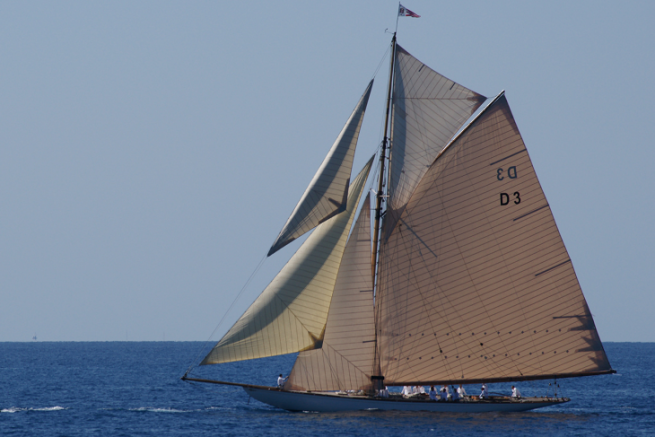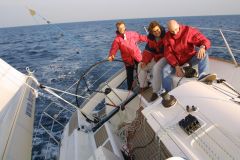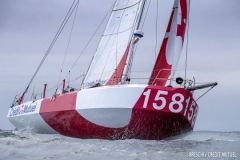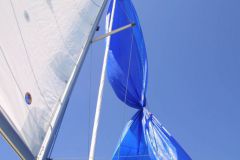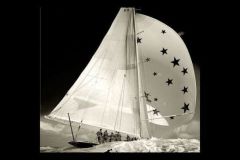It is sometimes difficult to find one's way through the many names of sails present on our boats. Here is a brief overview of the names and uses on our sailboats.
Mainsail: semi-battened or full batten?
For the mainsail, the choice, thanks to modern materials, is limited. It consists in choosing between a semi-battened or fully battened mainsail, called full batten.
The classic semi-battened mainsail is well adapted to sails of less than 25/28m². It is easy to use and very versatile, but it deforms faster when the wind gets stronger.
The full batten mainsail is very often equipped, as standard, with 4 forced battens and carriages on the luff facilitating the sending and the lowering. The main advantage of this product is its longevity! A battened mainsail is by definition more blocked than a classic mainsail. This has the advantage of a better ageing of the fabric, less subject to feathering.
The Swedish girl
For the older ones, we can mention the Swedish sail. This sail is somewhat equivalent to the storm jib for headsails, designed for storm conditions. It is a small sail with a short luff, a straight or even negative leech and an edge at 2/3 of the mainsail edge. The fabric is very thick and the reinforcements, very reinforced...
It has very often disappeared from the classic wardrobes of our sailboats.
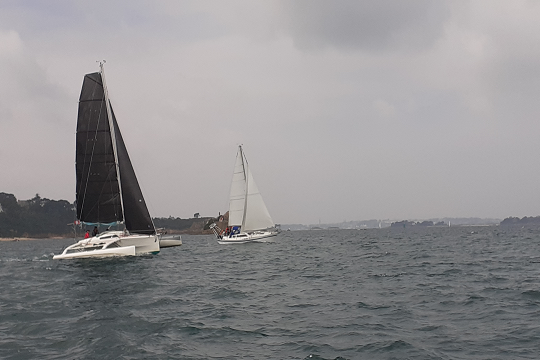
A large family of headsails
The large family of jibs and other headsails has expanded in recent times, thanks in particular to offshore racing. Some time ago, headsails were limited to a light genoa or drifter, a genoa and a heavy genoa, an inter with or without reefing band, a solent and a storm jib. The spinnaker, for the downwind, could be light, heavy, with nozzles or specific like the starcut, the tall boy and the big boy...
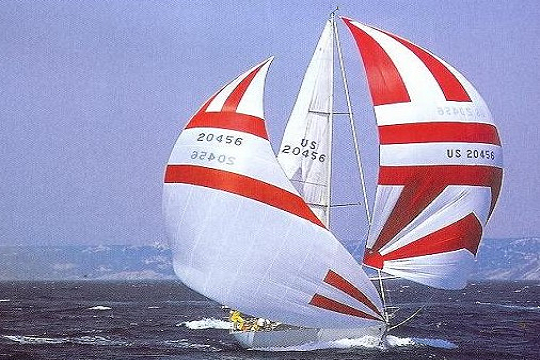
With the advent of furling and/or reefing jibs, has the wardrobe become smaller? Let's try to see more clearly and review all these jibs from the stormjib to the big spinnaker.
Upwind sails
Tourmentine
It is the storm sail par excellence. Small in size, with a weight of between 350 and 400g/m², it is most often orange in color for better visibility in poor conditions.
Nowadays, the stormbag is also used and is easily rigged on the genoa furler.
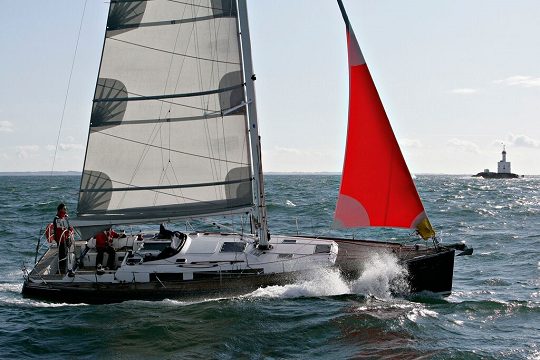
ORC
It is a larger tourmentin, breeze jib style. It is more elaborate in its cut. Its name comes from the international organization Offshore Racing Congress.
Trinquette
Slightly larger than the ORC, the staysail is also designed to sail in the breeze. The staysail is characterized by a fairly short luff and a very long edge. On rib-rigged yachts, it is associated with the yankee, a narrow jib with a very high clew.
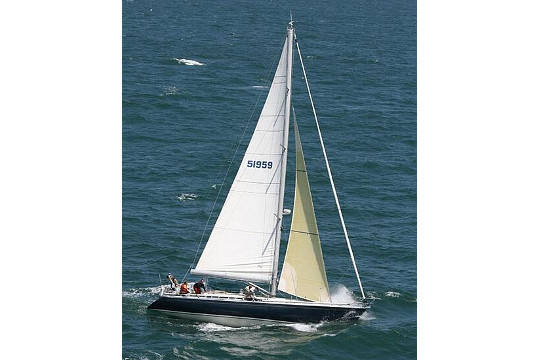
Solent
A beautiful upwind jib, it is a very slender sail with a luff at the top of the mast and a short foot to facilitate tacking. Those who have sailed in the Solent understand why, as sailing in the English river is not without its maneuvers.
We find its equivalent on some boats, hoisted on a removable forestay to replace the genoa.
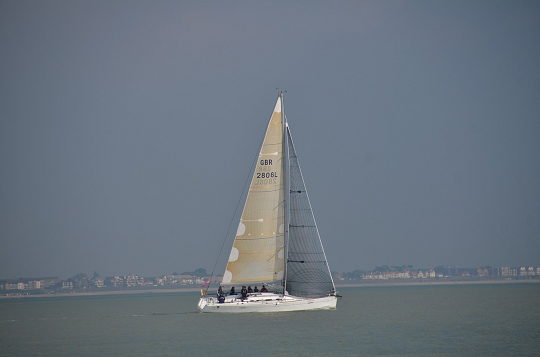
Large jib par excellence, it is most often on a winder. Depending on its weight and cut, it can stay in place more or less long. Once partially furled to adapt to the wind, it becomes hollow and must be replaced by an inter or a solent rigged on a releasable forestay.
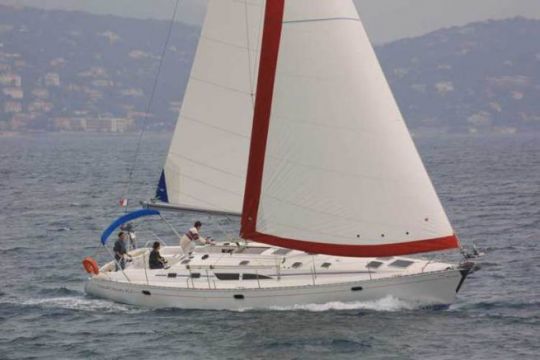
Sails of bearing
Reacher
It is a "deformed" genoa that is used for reaching. With its shorter leech and longer foot, it is easier to trim on downwind points of sail. It is used between 80° and 110° from the wind.
Code 0
The Code 0 is a kind of flat asymmetric spinnaker. This sail allows you to sail in light wind with an extra surface. It is used between 50° and 80° of the wind.

Gennaker
Located between the genoa and the asymmetric spinnaker, the gennaker is distinguished by its free luff and its tack on the bowsprit. A light-medium sail, it is used between 70° and 140° of the wind.
Code D
It is a sail that could replace two. It is used between 60° and 140° of the wind, which is the range of use of either the gennaker or the asymmetric spinnaker. The luff is free and its tack is on the bow or on the bowsprit.

Asymmetric spinnaker
Larger than the gennaker and with more shoulders, this sail is hoisted on the bowsprit. Its shape allows it to go downwind a little more. Best used between 80° and 160° from the wind. Despite its size, it is relatively easy to handle.

Symmetrical spinnaker
It is often the largest sail. Depending on the cut and weight, it can be used from 90° to 180° to the wind. Disadvantage: it must be pitched, which makes maneuvering and rigging somewhat complex, with two sheets, a topping lift, a low vang and two barberholers.
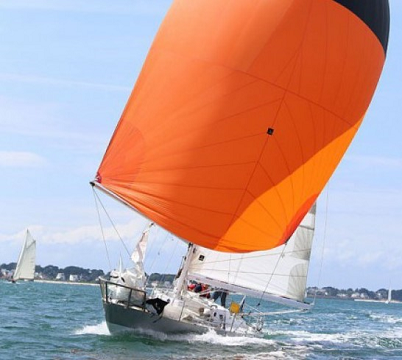
Is that all? Well, no. The nautical and sailing world does not lack imagination.
The Parasailor
It is a hybrid wing, resulting from the marriage of a spinnaker and a paraglider wing. The presence of this wing favors the lift and the stability of the sail. Rigged without spinnaker pole or bowsprit, it is a versatile sail for sailing between 60° and 180° of the wind.
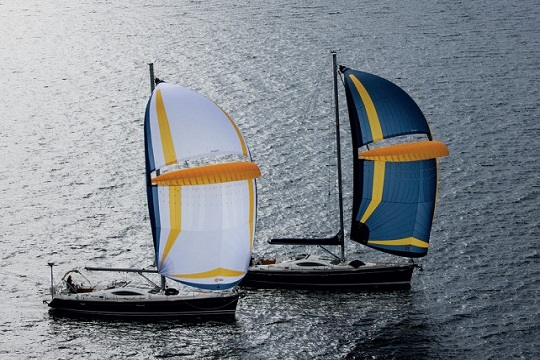

 /
/ 